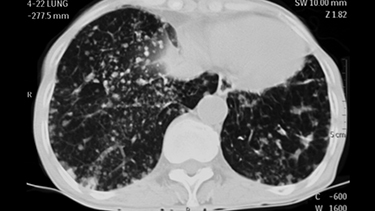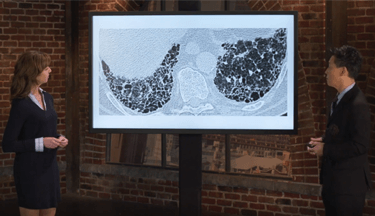Mixed Connective Tissue Disease-related ILD
OVERVIEW
Mixed connective tissue disease (MCTD) is an overlap syndrome including features of systemic lupus erythematous (SLE), systemic sclerosis (SSc), and polymyositis (PM).1 Up to 80% of MCTD patients present with pulmonary manifestations, including ILD (sometimes fibrotic), pleural effusion, and pulmonary arterial hypertension (PAH).2 The defining clinical feature of MCTD is the presence of high titers of anti-U1 ribonucleoprotein antibody.1
Overlap syndrome:
- SLE
- SSc
- PM
MCTD EPIDEMIOLOGY
In the United States, prevalence is estimated to be 32,000, and the annual incidence is around 6500 individuals.3,4
Onset of disease typically occurs in individuals between 15-30 years of age.5
RISK FACTORS AND MORTALITY5
RISK FACTORS:
- Females are 3 times more likely to develop MCTD
MORBIDITY/MORTALITY:
- 10-year survival ~80%
- Prognosis is worse in patients with signs of SSc and/or PM
Pulmonary hypertension is the most common MCTD-related cause of death.
SYMPTOMS
Symptoms of MCTD:1,5
- Raynaud’s phenomenon
- Puffy or swollen fingers
- Arthritis
- Prone to developing PAH
Many nonspecific symptoms may come before these more obvious signs — frequent fatigue, myalgias, arthralgias, low-grade fevers.5
MCTD-ILD EPIDEMIOLOGY6
- Just as MCTD is underdiagnosed, the associated ILD is also likely underrecognized
- An estimated 40% of people with MCTD have signs of ILD on HRCT
- ILD affects survival of patients with MCTD
| Total Lung Volume (TLV) involvement (ILD) | 10-year survival |
|---|---|
| <5% | 87% |
| >5%, <10% | 70% |
| >10% | 60% |


